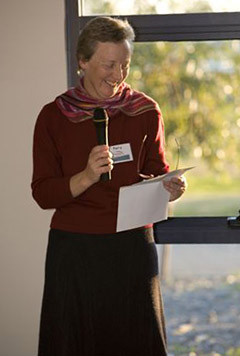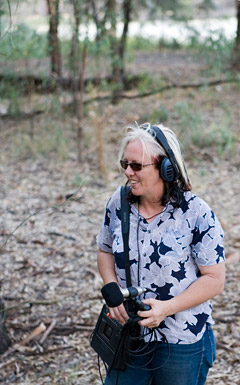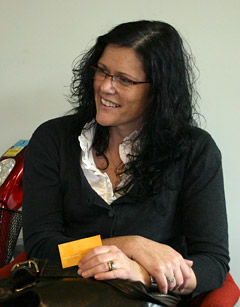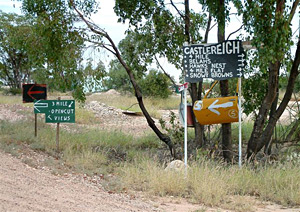Professional collaborations
This section provides reflections on the collaboration between professionals which was central to the way Migration Memories approached making the exhibitions.
In many ways the designers and photographers involved in the visual and aural realisation of Migration Memories were co-researchers. They provided insights from their own professional perspectives that refined the overall interpretation and reflected on their experience of the process.
Mary Hutchison, curator and researcher for the project. I wanted to establish the work as a project which was based on the engagement and interest of professionals working together rather than simply meeting deadlines. My feeling is that this approach supports coherence and depth in the overall interpretation as well as being individually much more satisfying and enjoyable – personal interest makes better outcomes. |
|
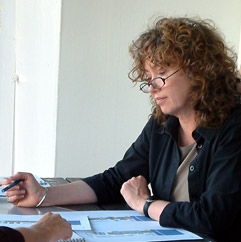 |
Iona Walsh, designer, Lightning Ridge |
|
Iona Walsh, photograph: Jenni Brammall. |
Lea Collins, composer and sound designer In the whole process I felt certain that the outcome would be more than the sum of the individual parts – which is not always the way in my experience. The reason I feel this is to do with the form of the collaboration – the possibility of being able to refine and refine and interrogate what we were doing. I didn’t work directly with the others but I met them and I was aware of the wider process. That again gave me confidence in the whole project, which in turn made me think harder and take the work further. |
|
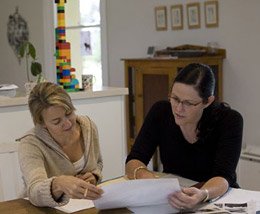 |
Paula McKindlay, designer, Robinvale |
|
Paula McKindlay (on left) with Jo Sheldrick. Photograph: Mary Hutchison. |
Jo Sheldrick, photographer, Robinvale
It was fantastic for me personally and professionally. We had the opportunity to build from something that had already begun but in a way starting it from scratch from our own perspectives. I was really excited about the collaboration with professionals in different fields from me. It was fascinating seeing the process evolve. Most photographers take the photos and that’s it.
|
|
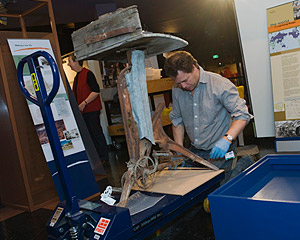 |
Tim Moore, exhibition designer, Thylacine As a 3-D designer it was an enjoyable challenge to work with Paula as a graphic or 2-D designer. She was very upfront about saying, ‘this is the idea I want, but I don’t know how to do it’. It led me to experiment with materials that I wouldn’t have. On a limited budget, and knowing that it would have to travel, the curved form was as beautiful as we could get it. It would have been lovely if we could have floated the curved panels in space rather than fitting them into a rectangular base. |
|
Tim Moore, National Museum installation.Tim also worked on the design for Robinvale. Photograph: George Serras. Courtesy National Museum of Australia |
Jenni Brammall, photographer, project officer, Australian Opal Centre, Lightning Ridge |
|

